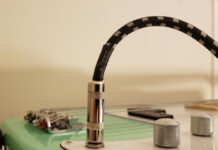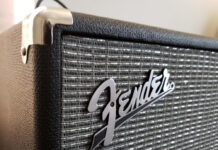
Summers can be stifling and there’s no better way to beat the heat than taking a dip or a relaxing swim in the swimming pool.
Before taking that refreshing dive, however, some health and safety issues must be considered. Pools have been idle during the winter months, and this causes a build-up of all kinds of dirt and sludge.
Before using the pool, it should be cleaned and the water must be tested and balanced first.
Read customer reviews of the best pool test kit on the market on Amazon.
What’s needed?
You’ll need a good pool test kit to check and get accurate readings of certain elements found in the swimming pool.
A test kit must be able to test for chlorine, bromine, pH, alkalinity and hardness, among many things.
They come in various forms and price range, and are readily available in the market.
Before deciding on a test kit, it is important to know some very important things about pool water testing.
Water balance
The elements found in the water must be kept at a healthy and safe balance.
To achieve this, the test results on the following basic elements must be within the proper ranges: alkalinity, pH, and calcium hardness.
Aside from these three basic elements, some kits are also able to test other elements, such as bromine, magnesium, cyanuric acid, water temperature, free chlorine, combines chlorine, total chlorine, sanitizer, and stabilizer levels, which also contribute to the balance or imbalance of pool water.
Water testing frequency
Since some elements change slightly slower and others faster, water testing should be done in different frequencies: pH and chlorine are done daily; temperature and alkalinity are done weekly, and calcium hardness and stabilizer levels are tested monthly.
Knowing your pool’s chemical character in different settings and temperatures will help you monitor changes in scheduling water tests on the pool.
Kinds of pool test kits
The demand for pool testing kits has consistently increased in the past years, and various types and brands fill the market.
The pool test kits that you will find as you shop around will fall under any of these basic types.
1. Test strip – with prices around $10 to $15, this test kit is easily the most affordable and most widely-used among the basic methods of water testing in swimming pools. They come in packs (bottled) of fifty. Test strips are usually used in combination with other types of kit.
2. Wet chemistry kit – this kit is considered as the most advanced method of pool testing. It comes in two forms – OTO (Orthotolidine) and DPD (Diethyl p-phenylenediamine). With this kit you get the exact outcomes using the color comparing block to filter the water from a plastic vial.
- OTO kit – compared to the DPD, this kit is less expensive for the reason that it can only test the amount of total chlorine in the pool, and does not distinguish between the amount of free chlorine and combined chlorine. This can pose an issue in figuring out the amount of sanitizer to be used.
- DPD kit – this kit is used to measure the amount of free and total chlorine in the swimming pool by extracting a water sample from the pool and adding more than a few drops of reagent into it. There’s a little waiting involved before the results show. This method is more reliable than other testing strips, with more enhanced details and higher accuracy.
3. Digital test strip reader – this kit is highly dependable in eliminating errors from the outcomes when combined with a test strip. The reader is quite affordable at about $50 considering its precision. While test strips are sold separately and add to the cost, the testing tandem is still a very intelligent choice for those who want to ensure water balance in the pool.
Considerations before buying a digital pool test kit
You’ve learned the basics, so what will you look for when finally making a purchase?
1. The kit must include all the essential tests. Cheap kits only include the most basic of tests. If budget is an issue for you, strike halfway with other features or quantity of strips as long as you get the tests most important for you and your pool’s users. Here are brief descriptions of each test:
The pH test is vital in maintaining the ideal pH range of 7.4-7.6. Below that range, water becomes acidic; above that range, sanitizers may not work effectively.
Alkalinity test measures the water’s ability to prevent pH fluctuations.
Calcium hardness test is often included in professional-grade pool test kits. It measures calcium content which must be kept within the range of 150-400 parts per million.
Free chlorine test is always included in test kits; free chlorine is the main sanitizer in pools. The test is important so that chlorine can perform optimal sanitation, without causing irritation to the skin or leaving any detectable smell to the water.
Combined chlorine test measures chloramines or the result when free chlorine combines with urine and other ammonia wastes. Regular monitoring and UV disinfection keeps the water free of foul odor and impurities that cause irritations and allergies.
Total chlorine test is automatically included if the kit has the two chlorine tests.
Cyanuric acid (CYA) test measures the level of stabilizers and conditioners. CYAs are usually contained in commercially available chlorine. The level of this element must be kept within 20 ppm to maintain the disinfecting ability of chlorine and minimize the destruction of chlorine by sunlight.
2. It must be easy to use even for ordinary home pool owners. Most pool owners are homeowners who want to keep maintenance costs low by DIY-testing their pool water. Thus, the kit must be easy to understand and use. The chemistry involved must be as user-friendly as possible. Check for the presence and completeness of manuals, test instructions, tables for interpreting ranges and color-coding must be easy to interpret.
3. It must give accurate readings. But how will you determine accuracy before actually buying and using the kit? Unfortunately, there’s no foolproof way to steer clear of inaccurate kits. You may, however, limit useless purchases by buying from reputable suppliers and trusted brands. Read reviews for each of the item in your shortlist. Ask from friends and family who own swimming pools.
4. It matches your need. The tests and design must be appropriate to your need. If your swimming pool regularly gets a heavy load of users, then you should opt for a kit that includes the test for combined chlorine. Otherwise, if the pool is exclusively used by a few people, there may not be much necessity for DPD kits. Test strips are very quick and easy to use, and they’re ideal for everyday checking. More detailed and more accurate testing can be achieved by the OTO, DPD, or digital kits for weekly or monthly testing.
Take time to compare products
Get the best value for your money. That is not to say that you should choose the cheapest pool test kit offered.
Do a cost-benefit analysis using the parameters we’ve presented, and pick the right kit for your pool. Learn how to use the kit correctly to get the best results.
Find the best pool test kit in 2023 on Amazon.
Originally posted 2023-01-06 04:50:31.


